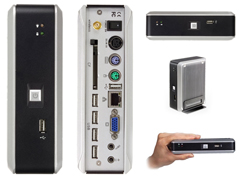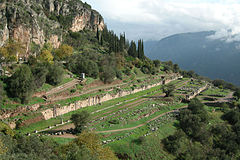ANU advocates educational programs informed by current research (1). Based on his experience of designing and teaching an e-learning course based on current research, Tom proposes using the educational techniques of the Moodle system for projects and research. He will use his globally accredited Green Technology Strategies course to illustrate the talk (2).
References:
- About the Australian National University, Going to Uni, Department of Education, Science and Training, 2010-08-03: url: http://www.goingtouni.gov.au/Main/CoursesAndProviders/ProvidersAndCourses/HigherEducationProviders/ACT/AustralianNationalUniversity.htm.
- Green Technology Strategies: Using computers and telecommunications to reduce carbon emissions, Tom Worthington, 2009, ISBN: 978-0-9806201-7-7, URL: http://www.tomw.net.au/green
Tom Worthington is an independent ICT consultant and an Adjunct Senior Lecturer in the Department of Computer Science at the ANU. Tom was recognised in the ACS Canberra ICT Awards 2010, as educator of the year, for design of the ANU's Moodle based Green ICT Course. Tom is a past president, Fellow and Honorary Life Member of the Australian Computer Society, a voting member of the Association for Computing Machinery and a member of the Institute of Electrical and Electronics Engineers.
One experience at the Department of Defence, while doing web pages for military exercises, seems relevant to this conference. At the invitation of the web master of the U.S. 7th Fleet I visited them on the Flagship on exercises off the coast of Queensland, for some extreme mobile computing. The 18,500 ton, 1,550 crew USS Blue Ridge is a mobile floating headquarters, equipped with ordinary desktop computers used to run military exercises. Standard office software and web browsers are used. This reduces the cost and allows systems to be easily upgraded. Temporary staff, such as the US Marines bring their laptops and stick them to the desktops using green gaffer tape.
The lesson from the US Navy was that that an IT systems need to be simple to survive. I suggest that IT systems at universities need to apply similar principles: simple and practical.
In 2008 the Australian Computer Society (ACS) commissioned a 12 Week E-learning course as part of the Computer Professional Education Program. This program is now part of the ACS's accreditation by the International Professional Practice Partnership (IP3) for international standards of professionalism in IT. It is at a postgraduate Masters-level with university articulation to several Australian university programs.
The course was first run by the ACS in early 2009. The course materials are available as free open source in the e-book Free e-textbook "Green Technology Strategies: Using computers and telecommunications to reduce carbon emissions" (Tom worthington, 2009). The course was run by the Australian national University, second semester 2009 and 2010. A version of the course adapted by one of the former ANU students for North America is offered by Athabasca University, Canada.
The ACS and the ANU use the Australian developed Moodle open source Learning Management System. This is used to provide forums for students to discuss what they are learning, not just receive content prepared by teachers. This also teaches students how to use the same on-line collaboration techniques in the workplace.
The techniques of using mentored collaborative on-line learning for computer professional education were developed for the ACS by David Lindley. This uses a model of online learning described by Gilly Salmon in "E-Moderating: the Key to Teaching and Learning Online.
Having run a Moodle based course for 18 months, there are some lessons learnt:
- Replace paperwork: The educational literature refers to the andragogical benefits of new paradigms with LMS. The commercial press emphasise the business benefits of an institution having an e-learning strategy. However, these are of little relevance to the individual teacher day to day. Teachers are busy with students, assessment and administration. The LMS can be used to automate much of the tedious work which keeps teachers from teaching, by replacing paperwork.
- Point to relevant content: Exemplar e-learning courses tend to have newly creating learning materials carefully crafted for the on-line environment. But the average teacher has to make do with what they can find to hand. The LMS can be used to point to an assemblage of existing materials, without having to create new material for a course. Books, in the form of e-books, can be used with the LMS.
- Communicate with students and staff: One of the major benefits of the LMS is to provide a controlled environment where students and teachers can communicate. This can be used to avoid the situation where teachers get hundreds of e-mail messages each day from students. Instead the students interact with each other in on line forums and the teachers provide guidance occasionally.
- Provide a repository of student work: The LMS can provide a place to keep copies of student work, without these cluttering up the teacher's real or virtual desktop.
These lessons learnt can be applied to supervising research.
As for other universities, ANU provides policies to help frame research and tools to help publish the results online. ANU also provide a specialised online system for researchers to discuss and collaborate online, but is such a tool needed?
ANU's Alliance is an implementation of the Sakai Open Source Learning Management System. This is provided for use by students and staff for research and education.
During 2009 ANU introduced the Moodle Open Source Learning Management system, under the ANU name of "Wattle" to replace WebCT. Mooble is intended to be used for supporting traditional face to face courses, blended courses and pure online e-learning courses.
Moodle was not to support education, with Sakai (branded "Alliance" at ANU) already in place for research. As a "research informed" university, it is likely that most researchers will be also undertaking some teaching. Moodle and Sakai provide essentially the same features and so it makes little sense for staff and students to learn both. It seemed reasonable to see how well this would support research.
In addition to class based courses, the ANU Computer Science Department has individual student projects. With these projects a student works on their own, with supervision from a staff member, researching a topic and producing some artifacts, such as computer software. One use for these projects is to give the students a taste for research work.
Each student undertakes their project on a different topic, with the details refined between the student and supervisor. All projects have some common requirements, such as a "Independent Study Contract Form", Initial Presentation, Final presentation written report. There are also suggested stages in the progress of the project.
While some structure is provided, undertaking an individual project can be daunting for both the student and the supervisor. Previously I have used e-mail for supplementing face-to-face meetings with the student. However, the number of draft documents can quickly get overwhelming.
Realising that Moodle already provided a structure, which the student and staff are familiar with, I set out to use this for supervising one student.
The first step was very simple, as I found that a default "course" had been automatically created in ANU's Wattle system for COMP8750. This had remained unused as the course did not previously use Moodle. The one student was added and a weekly structure set up.
The Moodle "Dialogue" tool was included at the beginning of the Moodle course for communications between the student and supervisor. This is slightly more clumsy to use than email, as the tool sends an email alert and the student or supervisor then as to enter Moodle to see what the message was. However, the tool keeps correspondence related to one course and one student together. If the supervisor is not available for some reason, the lecturer in charge of the course can read the correspondence.
The Moodle "Assignment" tool with advanced uploading of files was used for deliverable for the course, with each "assignment" placed where it was due. This provides an easy to understand schedule of what is required. Also a "weekly report" was added for each week, as an assignment. The intention is for the staff and students to gave regular feedback.
This approach as worked reasonably well. It should provide more effective where there are a large number of students using the system with individual supervisors, with the lecturer in charge being able to monitor progress.
The use of Moodle and similar LMS should be feasible with longer term research, such as for a full Masters, or PHD. However, there would need to be some adjustments to the way Moodle is normally thought of.
- Long Term Projects: Courses are normally assumed to ruin for six months or a year, with the contents being archived after that. PHD research may be undertaken over many years, causing problems for the management of the Moodle system.
- Larger files than for courses: Research projects are likely to generate many more and larger files than a conventional course. Also numerous drafts of the same document will create a document management problem, with Moodle currently lacking version control features.
- IP and Privacy issues with content: Research projects can be potentially commercially valuable and may contain confidential information. This information needs to be protected. This may conflict with the more open access provided for courses.
- Supervisors may resent being monitored: While supervisors may welcome being able to easily monitor progress of their students via Moodle, they may be less happy about monitoring from above. However, placing an onus on supervisors to check on student progress and provide feedback cannot be objected to.
One way around some of these problems is to use some of the other tools commonly provided with Moodle, such as Mahara.
- Allows for part time supervisors and students: Part time students and supervisors can have difficulty finding regular meeting times. By using the LMS, they can stay in touch online and avoid the risk of the project slipping.
- Encourages professional approach to supervision: Some academic have the approach to supervision of welcome the student at the beginning and asking where the thesis is at the end. Just as use of an LMS prompts the educator with questions about the design and outcomes of a course, this could prompt the supervisor about how much and what form of supervision is appropriate.
- Reduces paperwork: Working out what needs to be submitted where and when can be bewildering for both the supervisor and the student. By using an online system, with templates, there can be guidance as to the process. The thousands of email messages and hundreds of documents generated during a research project can be automatically filed away for future reference.
Slides for these notes are also available.
Copyright © 2010 (Version 1.0, 5 October 2010) Tom Worthington

Education Informed Research Using Moodle by Tom Worthington is licensed under a Creative Commons Attribution-ShareAlike 3.0 Unported License.





